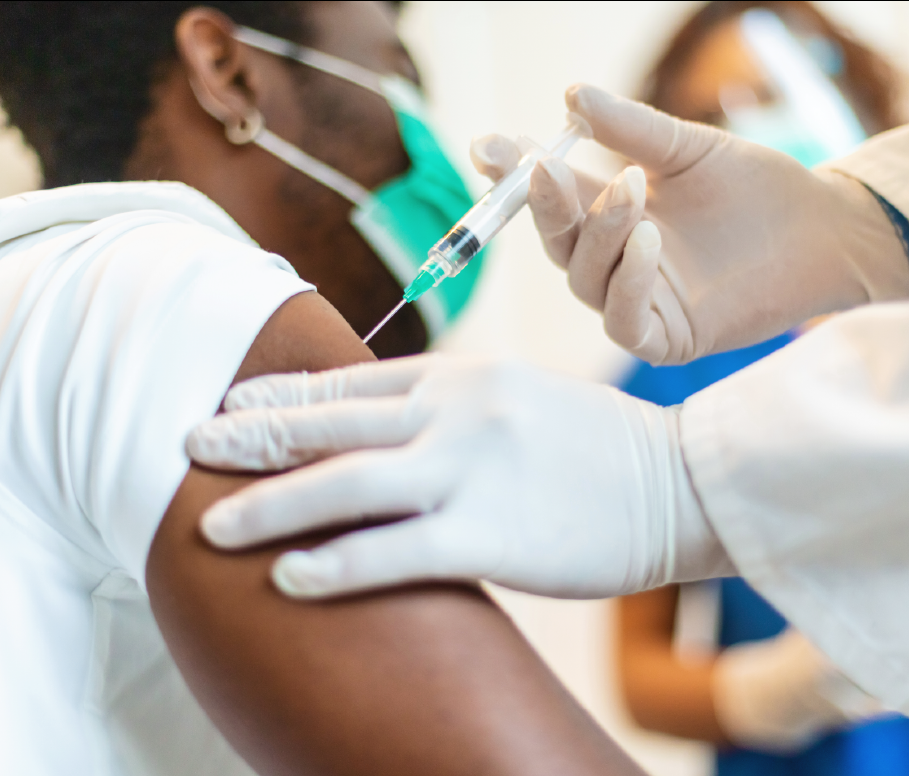This blog post is the third of the Real Barriers to Vaccine Equity series, which examines issues impeding greater and more equitable access to COVID-19 vaccines. Read the first and the second blog posts.
Roughly 21.7 million doses of COVID-19 vaccines are administered each day, the latest rates show. While the journey to this point has had challenges, the unprecedented progress is a testament to incredible global innovation. Such scientific advancements would not be possible without the robust intellectual property (IP) ecosystem in place today.>
Despite the incredible acceleration of vaccine manufacturing, distribution of vaccines has been lopsided, with the wealthiest countries vaccinating 25 times faster than the least wealthy. This inequality is especially evident in Africa, where only 11 percent of the population is fully vaccinated. Many have been quick to pin the blame on IP rights – although vaccine supply currently exceeds demand. In fact, poorer countries have rejected millions of doses due to a variety of reasons, like hesitancy and distribution challenges. There are numerous barriers that must be addressed to help support a more equitable vaccination rollout for the world.
Supply chain issues pose serious challenges to vaccine access, leaving many nations unequipped to vaccinate their populations, despite a surplus of vaccines:
- Nigerian Health Minister Osagie Ehanire summarized it as such: "The foundation is not strong. And if you don't have a strong foundation, there's not much you can build on top." Nigeria’s already strained medical supply chain has faced numerous obstacles to vaccine distribution, including transportation and storage challenges, technical issues and poor data management. As a result, the country has had to destroy a number of expired doses.
- Supply chain obstacles are abundantly evident in Cameroon, which has just one refrigerated truck suitable for transporting vaccines. According to UNICEF, “it needs at least 2,500 more fridge temperature gauges and more trucks to increase distribution.” Mali, one of the largest countries in Africa and home to over 19 million people, has two refrigerated trucks to carry vaccines long distances.
- In India, experts have pointed to “the abject last of procurement planning” despite the country’s strong domestic vaccine manufacturing ability, as one of the challenges hindering COVID-19 vaccine access.
- Nepal, having overcome vaccine supply issues and inadequate cold storage, faced another problem in the form a of syringe shortage. The country was forced to postpone a planned immunization drive indefinitely, as they could not arrange for the smaller syringes needed for the Pfizer vaccine. A massive shortage of autodisable (AD) syringes has disproportionately affected low- and middle-income countries. Seventy countries exclusively use AD syringes for vaccinations – almost all of them in Africa and South Asia.
COVID-19 has exposed weaknesses in our global health care supply chains, highlighting their importance in achieving widescale vaccine equity. Undermining IP protections will not address the real barriers to vaccination rates, but it will hamper future innovation necessary for scientific advancement. Instead, we must address these barriers and invest in strong and resilient medical supply chains, prepare for future pandemics and enable equitable global access to innovation.
“We must address the real barriers to vaccination and invest in strong and resilient supply chains, prepare for future pandemics and enable equitable access.”


